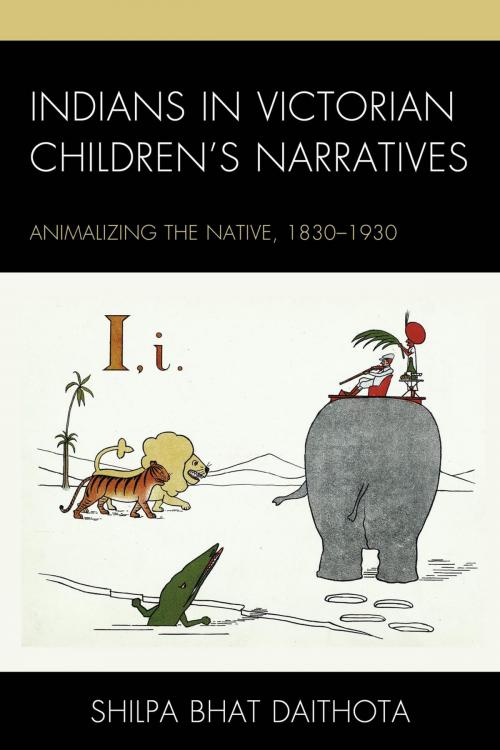Indians in Victorian Children’s Narratives
Animalizing the Native, 1830-1930
Fiction & Literature, Literary Theory & Criticism, Asian, South & Southeast Asian, Children&, British| Author: | Shilpa Daithota Bhat | ISBN: | 9781498546850 |
| Publisher: | Lexington Books | Publication: | May 18, 2017 |
| Imprint: | Lexington Books | Language: | English |
| Author: | Shilpa Daithota Bhat |
| ISBN: | 9781498546850 |
| Publisher: | Lexington Books |
| Publication: | May 18, 2017 |
| Imprint: | Lexington Books |
| Language: | English |
The genesis of the history of British colonization in India is often traced to traders, merchants, and the formation of the British East India Company. While this is indisputable, what is ignored is the creation and perpetual fueling of the steady stream of British officers into the Indian economy that happened due to the continuing efforts of British people and society. How did this ensue? In the contemporary world when we talk of the transnational terror networks we are filled with awe when we find children being engineered to the vocation of violence. However, this was true even of the earlier times when writers (albeit politely!) hid the colonial ideology within their literature. The children perhaps were tantalized by the beauties abroad, by the tigers, the rhinos, the ‘native’ Rajas! The use of animal imagery was conspicuous in such literature. This kind of narrative discourse was targeted not only at baby patriots but also at young adults, appealing them with adventurous stories of colonization in India. Through stories, museums, objects; the British children were continuously bombarded with knowledge of the colonies and its alluring bounties. These could be obtained only if the children would study them religiously, internalize the process of travel and looting; and actually reach the destination to perpetuate the imperial agenda. This book encapsulates the agenda of consciously training British children through underscoring resources and fauna in India pursued by the British society in the nineteenth century Victorian England.
The genesis of the history of British colonization in India is often traced to traders, merchants, and the formation of the British East India Company. While this is indisputable, what is ignored is the creation and perpetual fueling of the steady stream of British officers into the Indian economy that happened due to the continuing efforts of British people and society. How did this ensue? In the contemporary world when we talk of the transnational terror networks we are filled with awe when we find children being engineered to the vocation of violence. However, this was true even of the earlier times when writers (albeit politely!) hid the colonial ideology within their literature. The children perhaps were tantalized by the beauties abroad, by the tigers, the rhinos, the ‘native’ Rajas! The use of animal imagery was conspicuous in such literature. This kind of narrative discourse was targeted not only at baby patriots but also at young adults, appealing them with adventurous stories of colonization in India. Through stories, museums, objects; the British children were continuously bombarded with knowledge of the colonies and its alluring bounties. These could be obtained only if the children would study them religiously, internalize the process of travel and looting; and actually reach the destination to perpetuate the imperial agenda. This book encapsulates the agenda of consciously training British children through underscoring resources and fauna in India pursued by the British society in the nineteenth century Victorian England.















